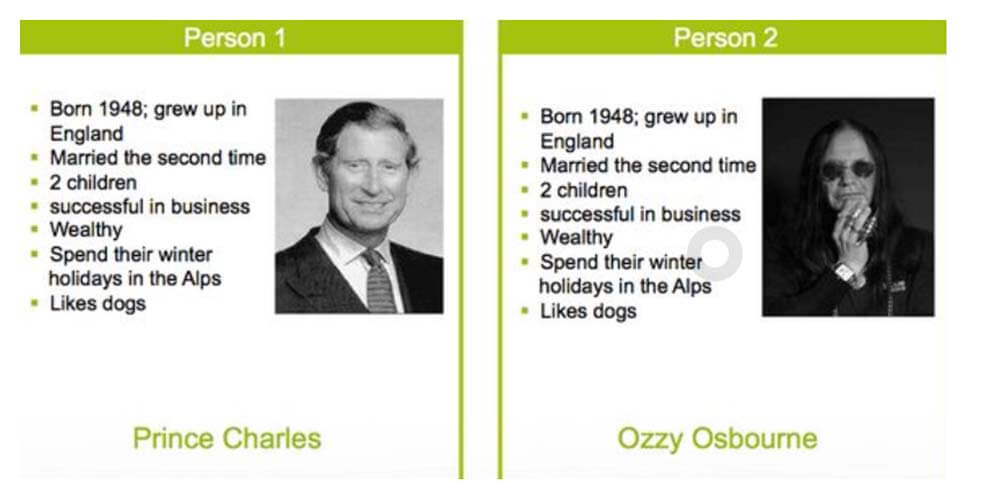
Tim Simpson and Elizabeth Sage, both from Maritz Global Events, speak during their Convening Leaders 2022 session, “Transforming Event Experiences: How to Deliver Meaningful Human-to-Human Moments.”
Two years ago, Tim Simpson, the brand and engagement chief strategist for Maritz Global Events, was unequivocal in his support for the use of personas, fictional characters that are used to represent audience segments. Simpson stood on a stage at Convening Leaders 2020 in San Francisco and told the audience, he recalled: “If you aren’t doing personas now, you’re behind the eight ball.”
Simpson has since updated his advice about personas, he shared last month at Convening Leaders 2022 at Caesars Forum in Las Vegas, where he appeared on a screen on stage rather than in person, in a pandemic-related adjustment. “Guess what, everybody,” Simpson said. “We’re starting over. We’re back at square one coming out of the pandemic.”
His second thoughts were not because people have fundamentally changed over the last two years — although their preferences have shifted, Simpson said during the session “Transforming Event Experiences: How to Deliver Meaningful Human-to-Human Moments.”
But relying on personas, rather than people, can be dangerous, Simpson pointed out, as he displayed a side-by-side comparison of identical demographic descriptions of Prince Charles and Ozzy Osbourne to illustrate his point. Both men were born in the same year in the same country, are wealthy, are on second marriages, and share other things in common, including where they spend their winter vacations and their fondness for dogs. But as similar as they are on paper, the two men aren’t likely to have identical preferences when it comes buying products and services.
Watch CL22 Sessions
Convening Leaders 2022 attendees, go behind-the-scenes in our MashUp Studios and re-watch the Main Stage and other sessions for education credits in JUNO’s CL22 Library. On-demand access is available through March 12, 2022.
Simpson was joined on stage in Las Vegas by Bianca Ferrer, creative director and event strategist for B+L Creative Group, and Elizabeth Sage, CMP, an experience design strategist for the Design Studio by Maritz Global Events. While the three contended — and persisted — with audio issues, Simpson joked, “We’re having a human-to-human moment.”
Simpson hasn’t yet arrived at a standard definition of what human-to-human design means for the events industry, he said. But, he added, “I think we can all say this: Humans are driven by their personal values. They’re making decisions based on that. They want experiences which are personally relevant to them. They desire community. And I would define community by relationships, belonging, connection — and they want that which fulfills the ‘me’ across multiple dimensions. I think there’s a lot that we can do to gain more in rich insights in uncovering the whole person who we’re designing for.”

The demographic descriptions of Prince Charles and Ozzy Osbourne are exactly the same, but they likely have different preferences when it comes buying products and services, Tim Simpson pointed out.
Marketing personas have their place — they can be used to help communicate messages about the value of an event to different target audiences, he said. But people, not personas, are at the heart of the product-innovation lifecycle, Simpson said. “So, if we’re determined as an industry to deliver meaningful human experiences, then we really need to rethink how we become more personal in our data collection.”
Many, but not all, organizations rely almost exclusively on event satisfaction surveys to drive event design decisions, Simpson said. They are important, but “I think that the risk of only doing post-event satisfaction surveys is that it’s sort of like trying to look forward through the rear-view mirror,” Simpson said. And just like a rear-view mirror, when designing surveys, there are blind spots — things we don’t think to ask about, he said.
An alternative is to begin “asking the right question at every stage of designing the experience,” Simpson said. “Build them into your planning cycle, asking those preference questions up front, knowing that preferences change.” In addition to questions about preferences, such as session format types and how the balance of time is spent doing different kinds of thing on site, the questions should also uncover the differing values that participants bring with them into events, he said. “You can start to paint a picture that is much richer.”
Barbara Palmer is deputy editor of Convene.
